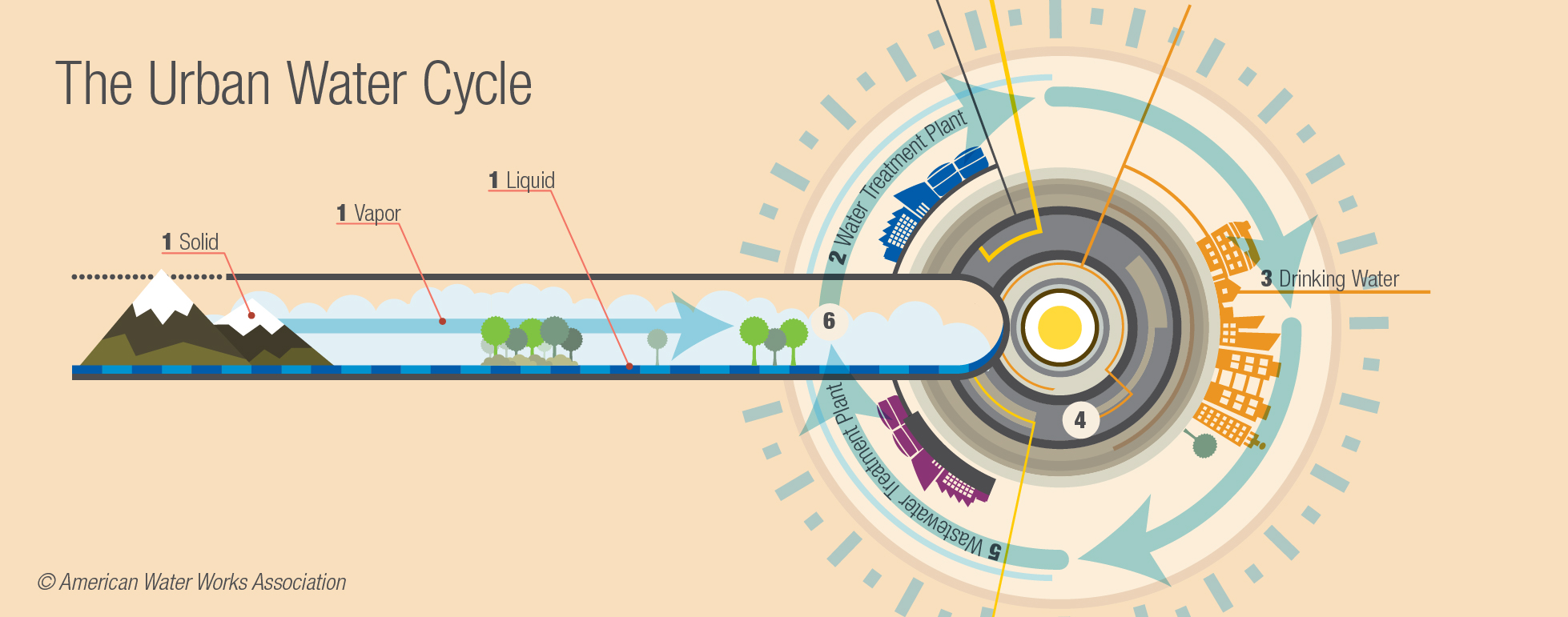When we see the damage from a significant weather event, like Tropical Storm Debby, we feel for those affected.
Water professionals certainly share that sentiment, but they are trained to manage the injection of precipitation into the water cycle.
For example, DC Water in Washington, D.C., is constructing an extensive series of tunnels designed to capture more stormwater and alleviate sewer overflow problems that were polluting their drinking water source.
Historically, periodic downfalls overflowed the city’s sewer capacity, dumping more than two billion gallons of a mixture of sewage and stormwater into surrounding rivers. When the tunnel project is complete, DC Water anticipates reducing overflows into their sewers during an average rainfall year by 96% throughout their entire system.
The water cycle plays a critical role in how we get our water. The diagram below shows how we work with nature to treat and deliver our water safely while also protecting the environment.

- The water cycle reflects the ever-changing form of water — vapor, liquid and ice.
- In its liquid form, water is treated at a water treatment plant.
- The treated water is distributed through pipelines to your home as drinking water.
- After your family uses drinking water, it drains into the household’s wastewater pipeline and flows to the utility’s main wastewater pipeline.
- From there, the water system takes the wastewater flow into the area’s wastewater treatment plant, where it is treated.
- After being treated, the water is either reused or released back into the environment to restart the cycle.
To learn more about your water source and its treatment, visit the Your Local Water webpage or contact your local water provider.